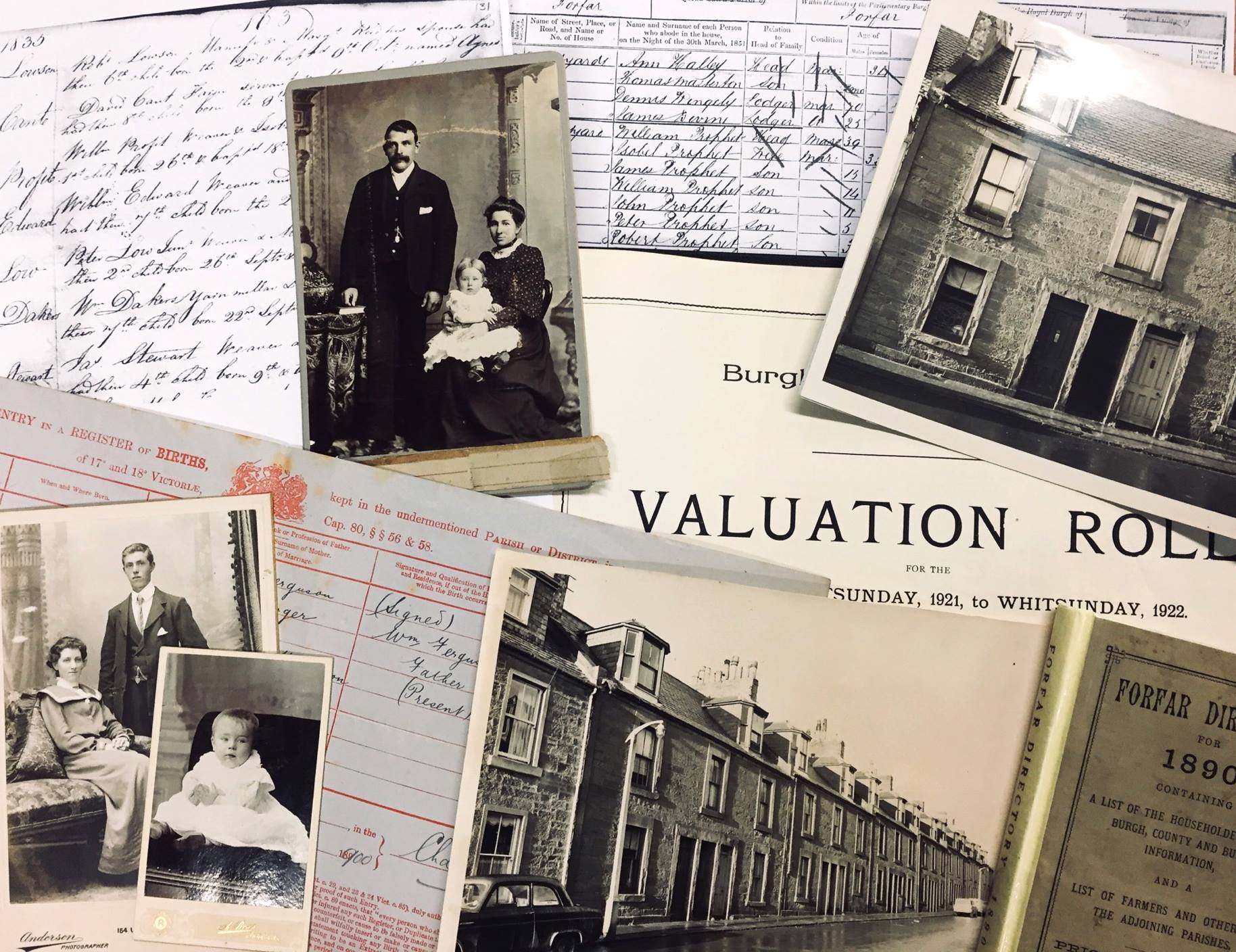The County of Angus has a rich and fascinating story to tell – a tale intertwined with the families who have, over the centuries, made this beautiful corner of Scotland their home.
Fishermen, farmers, weavers, shoe makers, poets, jute workers, artists… No matter their occupation or their rank in society, the people of Angus shaped the land, the towns and the city with their labour. In return, the land and towns played a part in making their descendants the people they are today.

Here are some of our fascinating local history stories:
A Scottish Botanist
George Don was a Scottish botanist, born at Doo Hillock, Forfar, in 1797. His father, also named George Don, was Superintendent of the Royal Botanic Garden, Edinburgh, in 1802, and his mother was Caroline Clementina Stuart. George was the elder brother of David Don, also a botanist. Don’s main work was his four volume A General System of Gardening and Botany, published between 1832 and 1838. He died at Kensington, London, in 1856.
Fellow of the Royal Academy
Catherine Hollingsworth was born in Brechin in 1904. Her father was the leader of a Brechin band and a well known musician. Catherine joined her father in the Brechin Opera, taking the role of Pittising in the Mikado. She studied at the Royal Academy of Music in London between 1922 and 1925. Catherine moved to Aberdeen in 1941 where she began the first municipal children’s theatre, the first Festival of the Spoken Word, and the Aberdeen Long Acre players. She retired to Dundee and published her biography in 1991. Catherine was made a Fellow of the Royal Academy in 1954. She died in July 1999.

Burgh and County Librarian
James Christison was born and educated in Montrose. In 1904 he was appointed as librarian to the new Public Library. He was the first and only librarian to occupy the librarian’s flat incorporated into the library. Christison had a great love of books and believed that librarians should not be mere distributors of books, but guides. He was a great friend to writers, such as Violet Jacob, who sought his opinion on their work. He delivered many lectures all over Angus on a number of literary topics. The poetry of Robert Burns was one of his favourite topics. As librarian, Christison took a pro-active role in preserving Montrose’s local history, seeking out material, printed, photographic and archival, for the Local Corner. This material has formed the basis of the present day Local History collection and Montrose collections in Angus Archives. He served as both burgh and county librarian until he retired in 1941 at the age of 74. He died on 20 July 1945.

Walk in the footsteps of your ancestors
Many visitors with roots in Angus come to the area to see for themselves where their ancestors lived and worked. Tracing a family tree is about much more than simply adding names and dates to a flow chart showing the generations that went before you. It’s about discovering what your ancestors did during their lifetime, the conditions they lived in, the struggles they faced, how they contributed to, or were affected by, the historic events of the day and how their experiences and decisions shaped their own family and the generations who followed.
Angus Archives, and the libraries in Angus, have a vast range of research material for anyone looking for information about their Angus ancestors, and knowledgeable staff are on hand to advise and assist.
There is also a wealth of information available in our Angus Kirkyard Trail and WW1 Heritage Trail which you may find useful in your search.

Here are our top ten tips for finding your ancestors:
- Search – Look out any family records to find your parents and grandparents dates and places of birth. Local registrars should be able to help with this information if you cannot find it.
- Talk – Have a chat with older members of your family and make notes of their recollections.
- Fill in the gaps – Go through all available documents very carefully – official documents, school reports and photographs can all be vital information.
- Go online – Family history websites can provide records as far back as 1855.
- Sketch your family tree – Outline what you know on a family tree. Templates are available to download online.
- Check – Cross reference what you find with official records and archive material.
- Focus – Decide whether you are going to concentrate on your mothers or fathers line, to avoid getting sidetracked.
- Be organised – Keep a folder with all of your notes and records.
- Ask for help – If you research hits a dead end, get specialist help from registrars, archives and family history societies.
- Visit – There’s something special about exploring the places your ancestors lived.
Good luck with your search!




